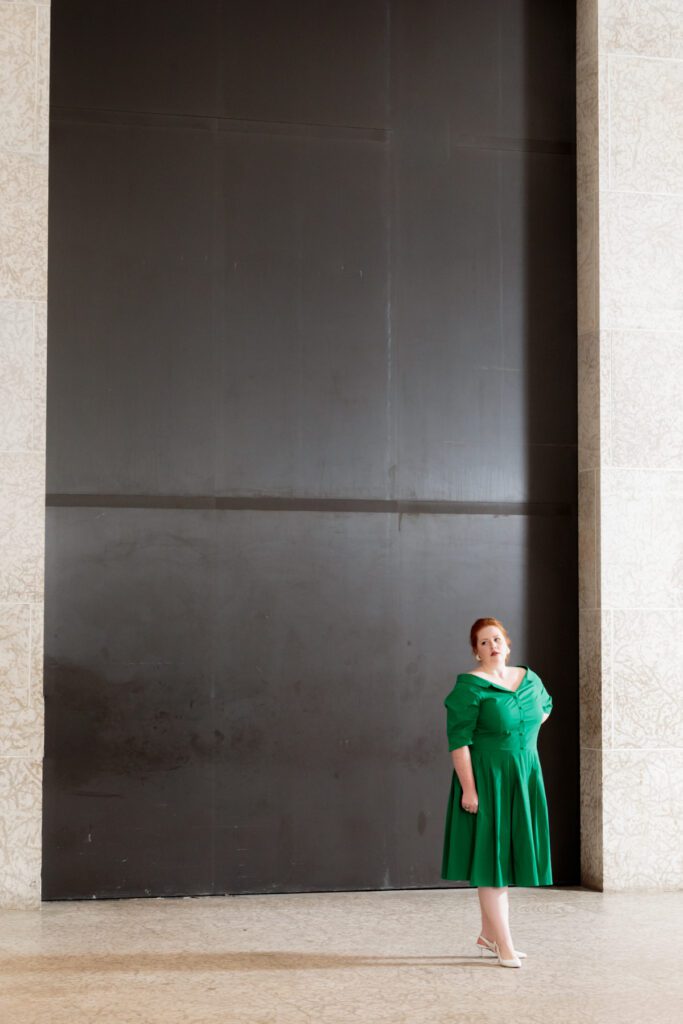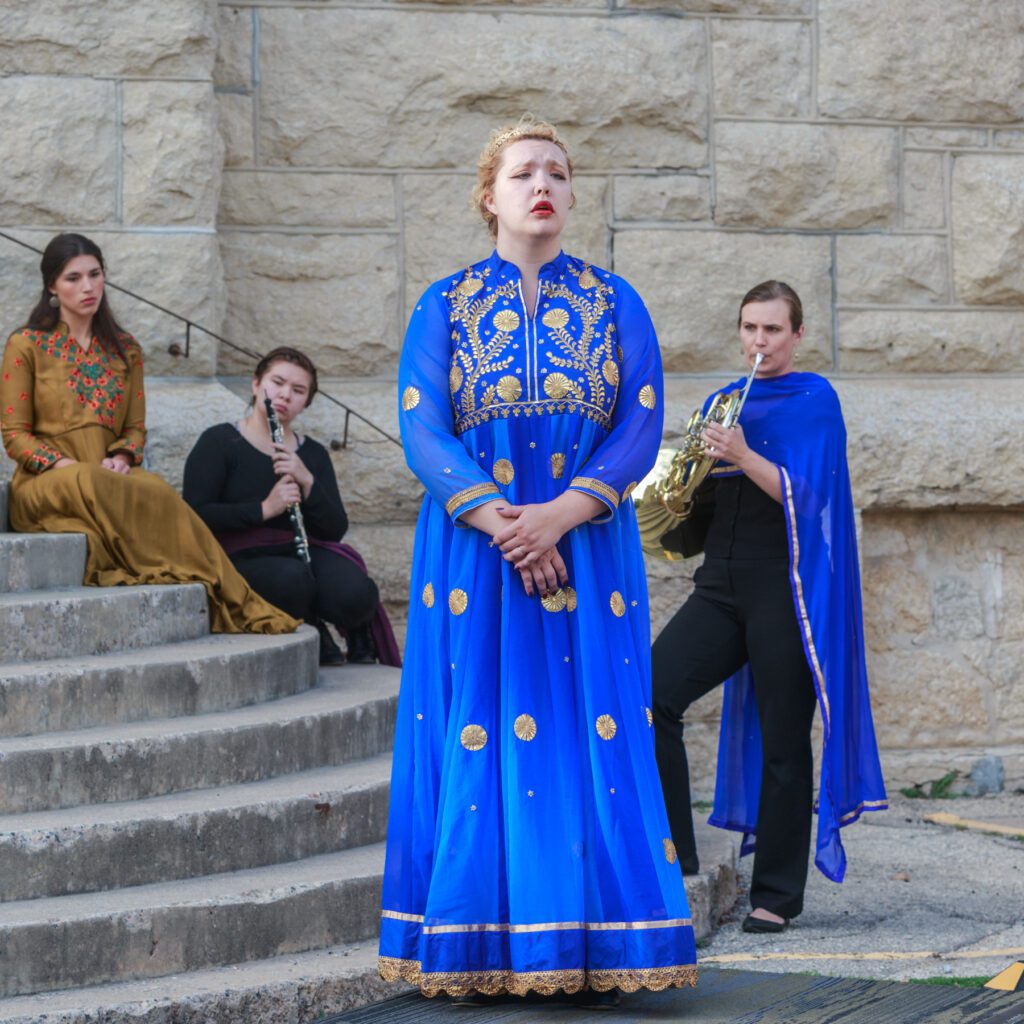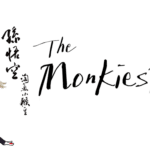Founded in 2008 by Winnipeg-raised conductor Brendan McKeen, the region’s youngest opera company strives to present “new, adventurous productions of classic operatic repertoire in unique locations.”
Specializing in what McKeen calls “found space opera,” MUO tends to avoid theatres, instead tailoring operatic works to suit small, intimate and typically unconventional venues. This way, he says, the audience gets to be “up close and personal…like they’re almost part of the show.”
Often, in fact, the audience is part of the show. MUO’s 2015 Cendrillon had the audience integrated into scenes of the opera as attendees at the ball, sitting at tables and enjoying cupcakes as performers sang and waltzed around them. Similarly, this summer’s production of Don Giovanni will see audiences following the character’s exploits from room to room at the Winnipeg Art Gallery and participating in the celebrations after the wedding ceremony scene.

Sydney Clarke (Donna Anna) in Manitoba Underground Opera’s Don Giovanni at the Winnipeg Art Gallery. Photo: Paul McKeen
With such unusually interactive performances, MUO consciously tries to stage works “that will be approachable to new opera fans or people that are just discovering the art form —people who haven’t fallen in love yet but are thinking, ‘oh, this is interesting,’” he says. Sometimes this means trimming down lengthier pieces or working with English dialogue to give audiences a frame of reference to follow.
This approach, he says, keeps classic operatic works both accessible and engaging—and draws in audiences from a diverse array of ages and backgrounds.
“We do have traditional opera lovers but then we will also see 20 year-olds coming in…one of whom attended our show in 2014 and said it was the best date she ever had with her boyfriend,” he recalls.

Nikita Silagy (Fortune), Meredith Liu (oboe) Emily Diehl-Reader (Ottavia), Caitlin Coppell (horn) in Manitoba Underground Opera’s Poppea at St. Boniface Cathedral. Photo: Paul McKeen.
“We’re very much subversive to what the rest of the opera scene in the city is like,” notes McKeen.
“It’s not something you would necessarily see from a big company or big houses,” adds Brenna Corner the company’s Artistic Director. “For me, this is totally a labour of love…we’re trying to explore a different way to experience the opera,” she says.
This means doing away with some of the formalities typically associated with more traditional productions—“for example, we have the orchestra on stage interacting with the players and singers and being part of the dramatic storytelling,” explains Corner. One of the main reasons McKeen founded Manitoba Underground Opera was to address the lack of opportunities for music students to experience performing with a full chamber orchestra.
The company is also dedicated to doing more with the art form than merely putting on “beautiful productions.”
“Both Brenna and I really want to make sure we are doing opera that has some sort of social connection,” he said. Inspired by ongoing developments in the #metoo world, MUO’s main stage shows specifically focus on “powerful men and the victimization of the women they impact,” with all-female creative teams at the helm of the process.
MUO’s August 18th benefit concert, Female Fortitude, highlighted the stories of “strong women who have changed our world,” with all proceeds going to Ikwe-Widdjiitiwin, an organization supporting Aboriginal women and children affected by domestic violence.
The role of art, after all, as McKeen says, is to provoke both thought as well as social change—“you can make art that’s beautiful for the sake of being beautiful and then make art that is there for a social reason with a statement to be said…we want ours to make a real immediate difference.”









